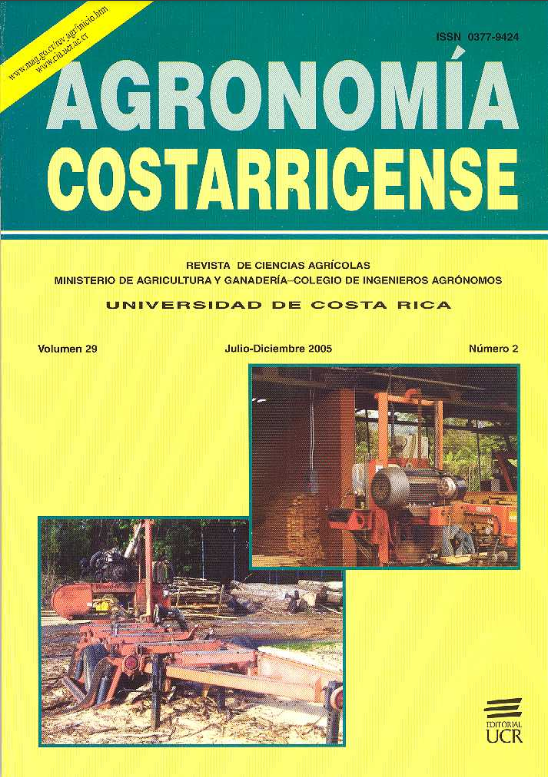Abstract
Three experiments were carried out during the 2001 through 2003 rainy seasons at Sabanilla, Poás and Sarchí Norte, (Alajuela Province), respectively, in order to analyze productivity, adaptability and phenotypic stability of 25 jalapeño pepper lines. The genotypes, along with 2 testers, were grown within a very young coffee plantation, following a randomized complete block design with 3 replications. The main response variables were number and weight of A, B and C type fruits, total yield as well as mean severity of leaf damage per plant due to bacterial leaf spot disease (Xanthomonas campestris). Combined analysis of variance revealed a line x location interaction, so the Eberhart and Russell (1966) stability analysis was performed, mainly for the total yield response of each line. Lines 2 and 3 were the best performers for total yield across locations: 10.57 and 12.38 t ha-1, respectively. Line 21 along with 2 and 3 were identified as the best ones for productivity at the less favorable location of Poas. Lines 15 and 18, along with 2 and 3, would increase significantly the income of a coffee producer at favorable environments, as compared with tester cultivars. Mean response of genotypes to foliage damage by bacterial leaf spot was low across environments (20.3%). Since this discrete foliage damage did not affect fruit yield, it is recommended to evaluate the lines under higher inoculum pressure.
##plugins.facebook.comentarios##

This work is licensed under a Creative Commons Attribution-NonCommercial-NoDerivatives 4.0 International License.
Copyright (c) 2024 Agronomía Costarricense


